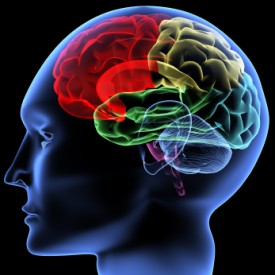Helping a Kinesthetic Learning Child Prepare for Visual or Oral Tests: A Reader Question
One of the nice parts of running a blog is communicating with readers. It’s always great to receive suggestions and comments, as well as questions, so that we can all learn from each other.
The other day, a reader sent in a great question regarding how to best help her son, who is a kinesthetic learner, improve at taking tests which often are – and which often come with instructions – that are visual or oral. The reader agreed to allow the question to be posted here on the site along with the response so that others can benefit from it too. Hopefully it will be helpful. And perhaps it can spark a discussion full of great ideas.
Here is what the reader wrote:
Hi,
My son is in 3rd grade and having a difficult time especially with Math (subtraction and multiplication). I just started to read about different learning strategies and I am convinced that he is a Kinesthetic learner (we went over a quiz and a description of one and he agrees).
Anyway, I am miffed that I didn’t think of this sooner – I hope it’s not too late to start helping him to learn / utilize alternative study strategies suited for a kinesthetic learner.
I would also like your thoughts on how a kinesthetic learner can be better at taking tests. For example test instructions are either written down (good for visual learners) or given orally (good for auditory learners) – but what about kinesthetic learners? Same with the actual test, most tests are written down which is good for visual learners but not kinesthetic.
Even if I am able to help my son learn better by using kinesthetic methods, how can he deal with taking the actual test if it is mostly visual?
Here is the response below:
Hi and thanks for your question.
First of all, it’s understandable to be “miffed” that you didn’t realize your son’s learning style sooner. But try not to be too hard on yourself. It’s wonderful that you figured it out this soon! Some people don’t figure it out until much later and many never figure it out at all. So while he may have benefited for a few more years if you’d realized it earlier, you’ve still saved him many years, perhaps even a lifetime, of frustration.
As for your question about kinesthetic learners dealing with visual or oral tests and test instructions:
First I’d suggest that you might find some much more detailed answers to this question in the larger resources out there for kinesthetic learners. Amazon has many resources about kinesthetic learners and if you look through those you might find some that address this issue.
However, I will give you my best take on it.
Basically what you have is a problem of translation. You have someone who speaks “kinesthetic” and is then put into test situations where they are speaking “visual” and “auditory.” Obviously, the best possible situation would be if you can talk to the teachers or administrators about instituting some new approaches. Perhaps there is more that they can do to speak “kinesthetic”. But, of course, this isn’t always possible.
The next best thing, in my opinion, is to help your son learn to translate. As a kinesthetic learner, he may always be most fluent in “kinesthetic,” but just as someone who speaks English can also learn Spanish and then learn to go back and forth between them – or a better analogy is how a musician can learn to play by ear or by feel and to use written notation and then go back and forth between them – you might be able to help your son go back and forth between “kinesthetic,” “visual” and “auditory” depending on the needs of his classroom.
How would you do this? First, go over his material kinesthetically until he basically understands it. Then start adding in practice going back and forth between modalities. Have him act out something he’s learning and then immediately associate it with the written words and the sounds so they link up in his mind.
My guess is that it would be best to first just focus on the kinesthetic until he really has the concepts down so as not to confuse him. Only then, start adding in the translation aspect.
You could also create some mock visual or oral exams to practice with him at home where, if he needs to, he can get up and do something kinesthetic to help solidify the information in his mind and then go back to the visual and oral. Perhaps, by the time he takes the exam, you can get it to where he can imagine doing the movements in his mind, rather than having to get up and do them.
This is just a creative solution that comes to mind in response to your question. It isn’t based on research or anything objective like that. So you could try it out and see how it goes. But you should also seek out other ideas in resources such as those on Amazon or by looking up some of the experts on kinesthetic learning and contacting them.
If you get any other great ideas, please come back and share them in the comments. And if any readers have suggestions in response to this question, please share them in the comments, as well.
If you benefited from this post and want to contribute, please
The Kinesthetic Learner vs. Tactile Learners An Overview of the Different Ways of Learning

Thank you for this information. It is very helpful. We have also started to talk to the teachers to let them know how they can help him. So I am hopeful that we are on the right track now.
Glad the information was helpful. Hope talking to the teachers leads to some improvement. Let us know how it goes.